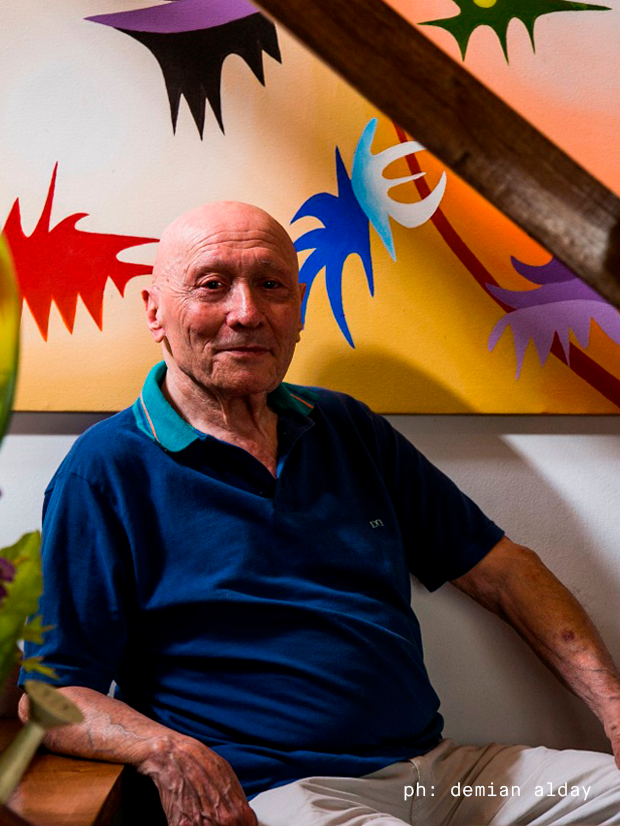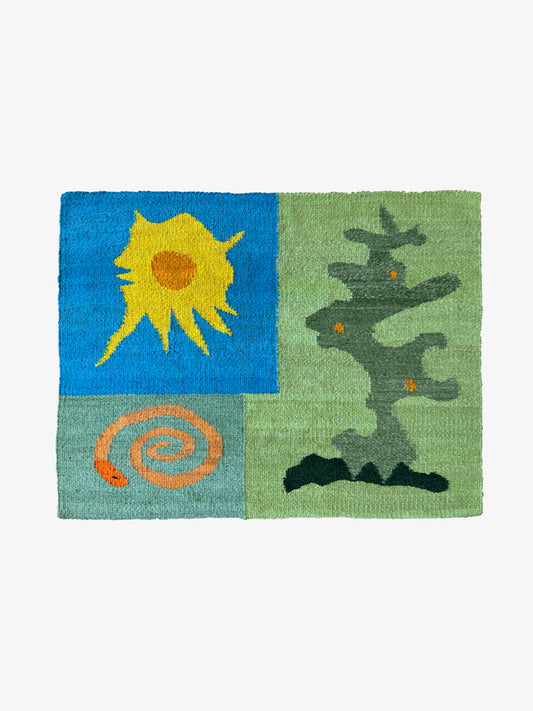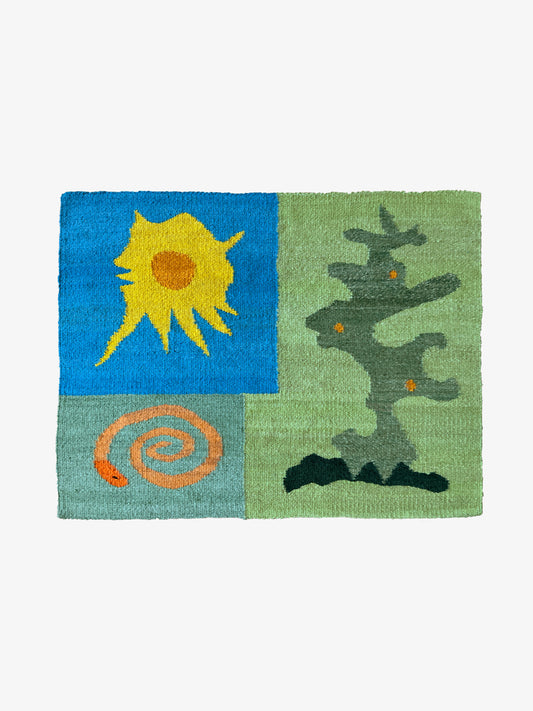iacopetti-page
-

-
Lido Iacopetti (San Nicolás, 1936)
“(...) these IMAGOS ASYSTEMATIC PICTOGRAMS, do not adapt to the conventional painting system, they are aggressive, dissonant, anti-pictorial for those who still handle a retrograde and expired vision. It is a painting that demands a new attitude, it is the NEW IMAGINATION, representative of a new humanity, flourishing, full, projected. A world inhabited by love, freedom, dignity, peace, and the joy of living. Those are some of the aesthetic signs that support this painting, and that is the way, for me, to do it".
A self-proclaimed popular painter, Iacopetti´s artistic career did not follow the usual path. After earning a degree in Art History in the University of La Plata, in 1966, he had solo exhibitions in various institutions in Buenos Aires, like the mythical Lirolay and Carmen Waugh galleries. But by the start of the next decade, he decided to abandon the capital´s avant-garde scene and return to his home town. Instead of exhibiting in large museums or fashionable galleries, he held exhibitions in non-traditional spaces, such as local shops, schools, bars, parks or even the streets. He also collaborated in “Diagonal cero”, an experimental local magazine created by another outsider artist from La Plata, Edgardo Antonio Vigo.
In the 60s, Lido´s work consisted of rectangular compositions and an iconography based on everyday objects. In 1969 he wrote a manifesto entitled Nueva Imaginación [New imagination], where he asserted his art as a means of transformation and freedom, and explained the pictograms that would populate his painting from that time onward, as symbolic representations of a new world. A devoted art teacher for several generations, he firmly believes in art and culture as an essential tool for social justice and growth.
-
Iacopetti Lido, Subaman.
Regular price $850.00 USDRegular priceUnit price per$1,000.00 USDSale price $850.00 USDSale -
Iacopetti Lido, Subaman
Regular price From $1,000.00 USDRegular priceUnit price per



